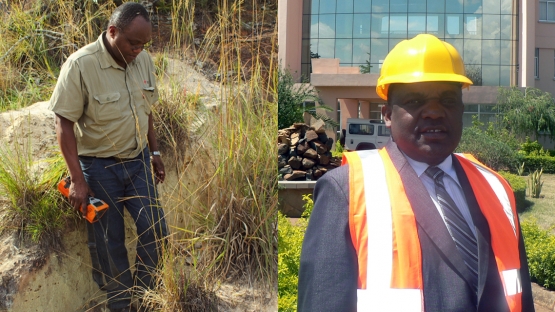The stage is set for uranium mining in the United Republic of Tanzania, following recent changes to the country's regulatory framework that brought it in line with IAEA recommendations. Environmental considerations and the involvement of the local community in monitoring the licencing process and future operations will contribute to the sustainability of the project, said Tanzanian officials and IAEA experts.
Tanzania, which has identified uranium resources of about 60 000 tonnes, looks to begin mining in 2016 in order to exploit its uranium deposits as part of the country's plans to increase the contribution of the mining sector from 3.3% of the gross domestic product in 2013 to 10% by the end of the decade. With its gold and diamond reserves nearing depletion, the country is shifting its focus to uranium. "Now it is time for the country to benefit from its uranium deposits," said Iddi Mkilaha, Director General of the Tanzania Atomic Energy Commission.
Following preliminary analysis, the government has identified half a dozen sites with good potential for mining and has issued prospector licenses. Recent feasibility studies identified one site with early commercial potential, Mkilaha said, but given the subsequent fall in uranium prices and the ongoing negotiations with foreign mining companies, no mining work has begun so far.
The government has requested IAEA assistance to bring its relevant legislation and procedures in line with safety and environmental standards and to make sure that good practices are applied ahead of the commencement of mining operations, Mkilaha said. "We wanted the Tanzanian people to benefit and realized that we did not have the proper legislation in place to ensure safe mining, processing and transportation. Now we do," he said.
The review considered regulatory, health, safety and environmental aspects, as well as sustainability in operations. The team provided several suggestions related to the regulatory framework, and to ensure that the mining activities followed IAEA standards and international good practices, especially related to health, safety and environmental issues, explained Harikrishnan Tulsidas, the nuclear technology specialist at the IAEA heading the Tanzania project.
Holistic approach
Thanks to the IAEA's input, the government took a more holistic approach to the issue of uranium mining and introduced environmental regulations, particularly in the area of water protection, Mkilaha said. "We had not before realized the importance of monitoring water streams and groundwater around the future mining areas," he said, adding that in the wake of the IAEA project baseline measurements took place to establish levels of different minerals and chemicals in the water. "We will be able to monitor the activity in comparison to these values," he said.
(Source: IAEA)
Tanzanian experts and policymakers also learned about the importance of getting the buy-in of the local community ahead of time, Mkilaha said. "We realized that with community involvement, we could reduce potential resistance to the project."
The authorities have engaged the local population through a series of meetings, including on employment opportunities, Mkilaha said. The research team conducting uranium exploration "has already employed local people, and the community sees the project as an economic opportunity in the area," he said. Following the recommendations from the IAEA, the government will, in consultation with the community leaders, create an environmental monitoring plan and set up a community consultation committee, chaired by a local representative, for ongoing monitoring of the operations, particularly in terms of environmental sustainability.
The review also called for a clear separation of responsibilities within the government, so that its role as a regulator is not compromised through its involvement as a strategic partner. "There was a possible risk and conflict of interest in the original set-up," Tulsidas said. As a result of the recommendations, the regulatory function of the Ministry of Communication, Science and Technology has been strengthened, with dedicated functional units responsible for oversight created at both the Ministry of Communication, Science and Technology and the Ministry of Energy and Minerals.
A second life for mining waste
IAEA experts also helped Tanzania devise plans to extract uranium from tailings, or mine dumps, left over from gold and phosphate mining. "This was considered waste before, but now we will see how they can be put to potential economic use," Tulsidas said.
With the price of uranium recovering and negotiations with investors progressing, the first mine will likely become operational in 2016 in the Mkuju River area, around 470 kilometres southwest of the capital Dar es Salaam, Mkilaha said.
__________
Hugo Cohen Albertini also contributed to this article.
We wanted the Tanzanian people to benefit and realized that we did not have the proper legislation in place to ensure safe mining, processing and transportation. Now we do.




